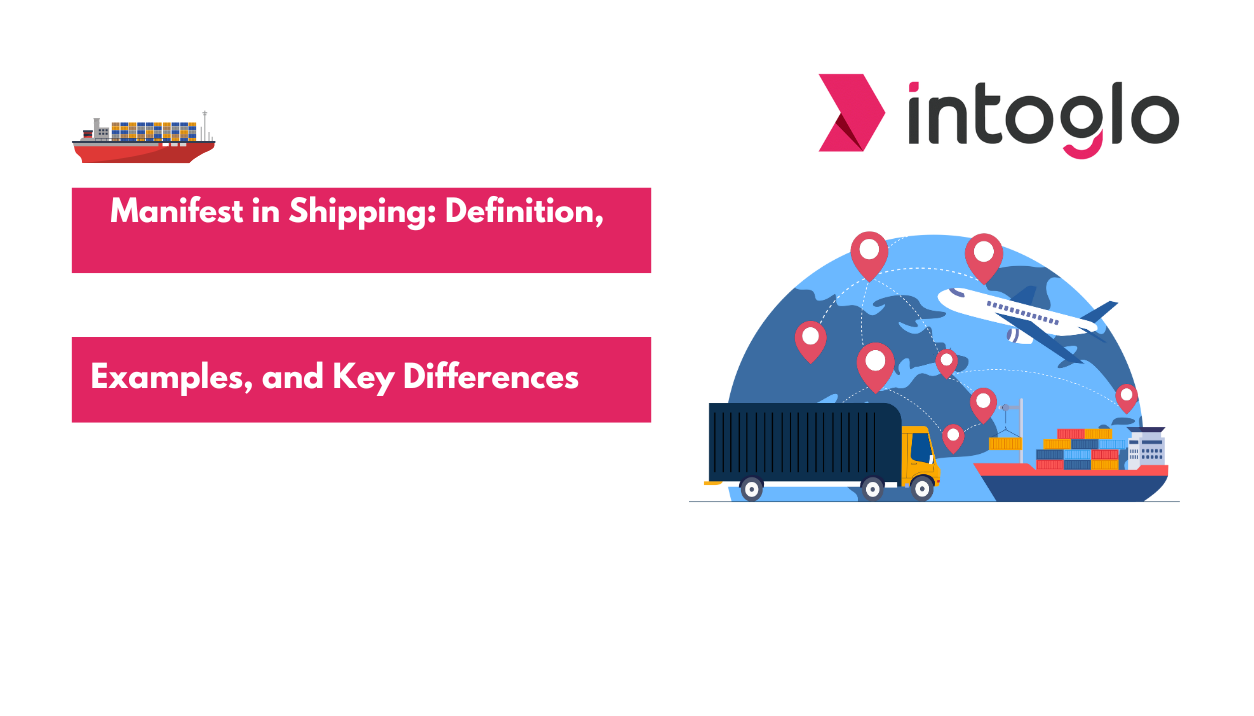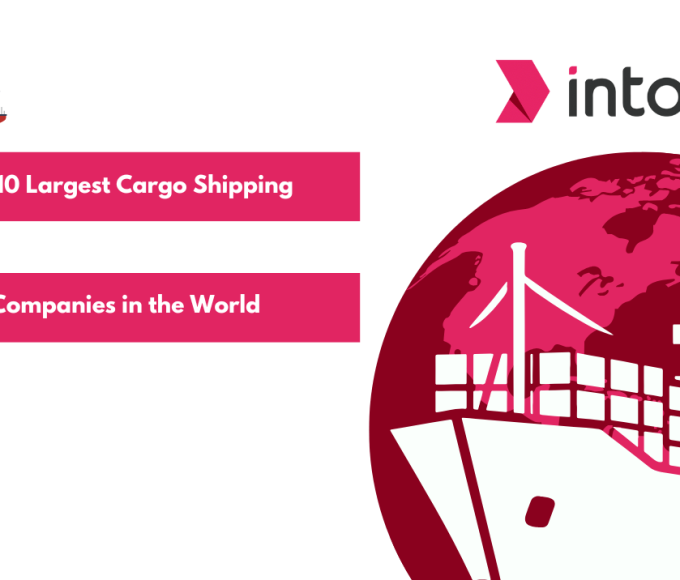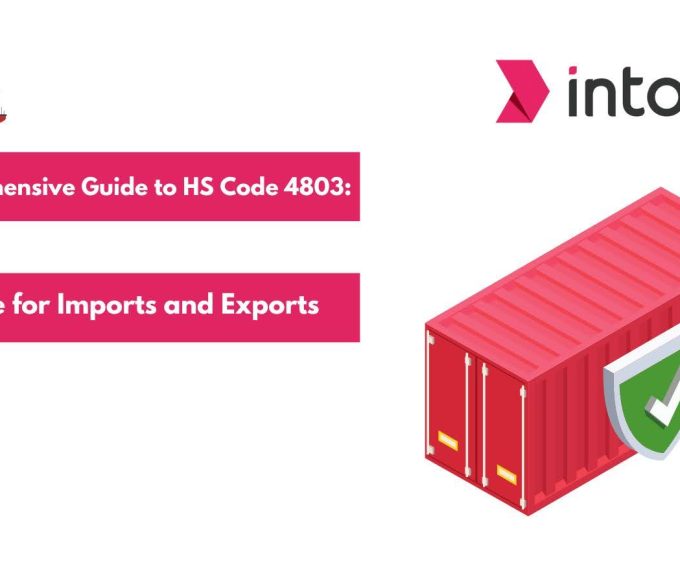Shipping can be complex, but a clear understanding of the shipping manifest can make all the difference. A shipping manifest is a document that lists every item in a shipment, acting as a roadmap for inventory management, compliance, and tracking. Whether you’re exporting textiles, machinery, or consumer goods from India to the USA, this document helps ensure smooth operations, from the warehouse to customs clearance.
In this article, we’ll explore the meaning of manifests in shipping terms, the different types of shipping manifests, the critical information they include, and how to tackle common challenges when creating one.
By the end, you will have insights into how to make your shipping process more efficient, error-free, and compliant.
What is Shipping Manifest
A shipping manifest is a detailed document that provides a summary of the transported cargo. It serves as a critical record for carriers, customs officials, and port authorities, ensuring transparency and accuracy throughout the shipping process. For exporters shipping goods from India to the USA, it serves critical functions at every stage of the logistics process.
Purpose of a Shipping Manifest
- Assist Customs with Regulatory Compliance and Clearance: Customs authorities rely on shipping manifests to verify the legality of goods being imported or exported. Accurate manifests reduce the chances of delays, fines, or confiscations by ensuring all necessary details are readily available.
- Streamline Operations: The shipping manifest simplifies billing and order fulfillment by clearly detailing the contents of each shipment. It ensures that every stakeholder, from the exporter to the carrier, has the information needed for smooth operations.
- Aid in Precise Stock Tracking: A shipping manifest provides a complete inventory snapshot, allowing businesses to track stock accurately. This helps prevent overstocking, understocking, or misplacement of goods.
- Support Risk Management: In case of disputes, damages, or losses during transit, a shipping manifest acts as a critical reference document. It ensures transparency and accountability across all parties involved.
Importance of a Shipping Manifest
- Facilitates Accurate Billing and Order Fulfillment: A clear record of goods ensures error-free invoicing and smooth order processing.
- Speeds Up Customs Processes: Well-prepared manifests expedite clearance at both Indian and U.S. ports, saving time and costs.
- Mitigates Risks: With precise documentation, you minimize the likelihood of logistical issues, inventory mismanagement, or non-compliance penalties.
- Strengthens Supply Chain Efficiency: By consolidating information in one document, the shipping manifest keeps all stakeholders aligned and operations streamlined.
Mastering the use of a shipping manifest can make your exports more efficient, compliant, and hassle-free, giving you a competitive edge in international trade.
Also Read: Top Transportation Management Software (TMS) Systems 2024
Types of Shipping Manifests
Shipping manifests come in various forms, each tailored to specific types of shipments and transportation methods. Understanding these types is crucial for ensuring compliance, safety, and efficiency in your export process. Here’s a breakdown:
1. Cargo Manifest
- Purpose: Used in sea and air transportation.
- Key Features: Lists all goods being transported, including details like weight, dimensions, and descriptions.
- Importance: Essential for customs clearance, helping authorities verify cargo legality and contents.
2. Freight Manifest
- Purpose: Designed for land transportation (road or rail).
- Key Features: Includes shipment details such as consignee information, item descriptions, and proof of delivery.
- Importance: Acts as a critical document for smooth billing and delivery confirmation in domestic and cross-border shipments.
3. Export/Import Manifests
- Purpose: Specifically used for goods entering or leaving a country.
- Key Features: Contains all the information required to comply with export and import regulations, including consignee and consignor details.
- Importance: Helps ensure legal compliance, avoiding penalties, fines, or shipment delays.
4. Hazardous Material Manifest
- Purpose: Used for transporting dangerous goods such as chemicals or flammable materials.
- Key Features: Includes detailed descriptions of the hazardous materials, safety guidelines, and emergency response instructions.
- Importance: Guarantees the safety of handlers and compliance with international safety standards during transit.
5. Out-of-Gauge Manifest
- Purpose: For oversized or unusually shaped cargo that doesn’t fit standard containers.
- Key Features: Specifies dimensions, weight, and special handling requirements.
- Importance: Ensures proper planning for equipment, routes, and permits for safe transportation of oversized goods.
6. Reefer Manifest
- Purpose: Dedicated to temperature-sensitive shipments such as perishable food, pharmaceuticals, or flowers.
- Key Features: Details the required temperature and handling conditions for the cargo.
- Importance: Guarantees the integrity and quality of goods by ensuring they remain in controlled environments throughout transit.
By selecting the correct type of shipping manifest for your cargo, you can streamline logistics, enhance compliance, and ensure your shipments reach their destination without issues. Whether dealing with hazardous materials or temperature-sensitive goods, using the right manifest is key to smooth operations and successful international trade.
Information Included in a Shipping Manifest Template
A shipping manifest is a comprehensive document designed to capture every critical detail about a shipment. It ensures accurate inventory management, regulatory compliance, and smooth logistics operations. Here’s what a standard shipping manifest typically includes:
1. Basic Shipment Information
- Shipper and Consignee Details: Names, addresses, and contact information of the sender and receiver.
- Carrier Information: The name and contact details of the transportation provider (airline, shipping line, or trucking company).
- Transport Mode: Specifies whether the shipment is by sea, air, or land.
2. Cargo Details
- Item Descriptions: A detailed list of goods, including names, categories, and quantities.
- Weights and Dimensions: Total weight and size of each package to ensure proper handling and storage.
- Volume: For bulk goods, the document may include the cubic measurements of the shipment.
3. Voyage Details
- Vessel Name/Flight Number: Identifies the ship, aircraft, or vehicle used for transport.
- Voyage Number: A unique identifier for the trip, useful for tracking and referencing.
- Port of Loading and Discharge: Specifies where the goods are loaded and unloaded.
- Estimated Departure and Arrival Dates: Provides a timeline for the shipment journey.
- Shipping Line or Carrier: Details of the service provider handling the transport.
4. Shipment Identification
- Shipment Number: A unique identifier for the shipment.
- Container Numbers: For shipments in containers, these identifiers ensure proper tracking.
- Bill of Lading Number: Links the manifest to the legal contract for shipping.
5. Customs and Regulatory Information
- Harmonized System (HS) Codes: Classification codes for goods to comply with international trade standards.
- Country of Origin/Destination: Indicates where the goods were produced and their final destination.
- Customs Documentation References: Links the manifest to other required paperwork, such as the bill of lading or commercial invoice.
6. Tracking and Handling Information
- Container Numbers: Unique identifiers for containers, crucial for tracking shipments.
- Seal Numbers: Details of the security seals on containers, ensuring tamper-proof transit.
- Special Handling Instructions: Notes on fragile, hazardous, or temperature-sensitive goods.
7. Financial Details
- Freight Charges: Information on shipping costs, including prepaid or collect arrangements.
- Declared Value: The monetary value of the goods for insurance or customs purposes.
8. Legal and Safety Information
- Hazard Classifications: Required for hazardous goods, along with emergency contact details.
- Compliance Certifications: Verifies adherence to safety and environmental regulations.
By including this information in a shipping manifest, exporters can ensure that their goods are handled, tracked, and delivered efficiently and in compliance with international shipping regulations. Accurate and detailed manifests reduce risks, streamline customs processes, and build trust with partners and clients.
To simplify the process of creating comprehensive and compliant shipping documents, explore Intoglo’s professionally designed templates. These templates ensure accuracy and efficiency, saving you time while meeting all necessary requirements.
To gain deeper insights into planning your shipments from India to the US, watch Intoglo’s webinar, Navigating Cross-Border Logistics. This expert-led session covers everything from compliance essentials to efficient shipment strategies, providing you with the A to Z of cross-border logistics.
Shipping Manifest vs. Bill of Lading vs.Commercial Invoice vs.Packing List
The below comparison highlights how each document plays a unique role in ensuring seamless international trade and logistics. Understanding these differences can help you use them effectively in your shipping processes.
| Aspect | Shipping Manifest | Bill of Lading | Commercial Invoice | Packing List |
| Purpose | Comprehensive record of all items in a shipment for inventory, compliance, and tracking. | Legal document serving as a receipt of goods, proof of shipment, and contract between shipper and carrier. | Details the financial transaction, including prices, payment terms, and taxes. | Detailed list of items in the shipment, used for verifying package contents. |
| Primary Use | Customs clearance, inventory management, and shipment tracking. | Evidence of title transfer, shipment acknowledgment, and carrier instructions. | Basis for payment processing, customs valuation, and tax calculation. | Simplifies unpacking, inspection, and inventory checks. |
| Issued By | Shipper or freight forwarder. | Carrier or shipping company. | Exporter or seller. | Exporter or shipper. |
| Legal Status | Not a legal document but crucial for operational efficiency. | Legal document used in disputes, title transfers, or claims. | Commercial document used for regulatory and financial purposes. | Non-legal document, supplementary to the invoice and manifest. |
| Content Focus | Item descriptions, weights, dimensions, and tracking numbers. | Details of goods, parties involved, and shipping terms. | Prices, payment terms, taxes, and total value of goods. | Quantities, dimensions, and specific package contents. |
| Required for Customs | Yes, for declaration and compliance. | Yes, as proof of shipment and carrier details. | Yes, as it outlines the value of goods for duty calculation. | Sometimes required, to verify shipment contents align with declarations. |
| Key Features | -Shipper/consignee details-Itemized list- Regulatory codes- Tracking information. | – Contract of carriage- Shipment terms- Proof of receipt by carrier. | – Price details- Taxes and duties- Payment terms. | – Itemized details- Weight and dimensions- Packing method. |
| Audience | Shippers, customs authorities, and logistics teams. | Shippers, carriers, consignees, and legal entities. | Customs officials, buyers, and financial departments. | Logistics teams, warehouse staff, and consignees. |
To create accurate and professional commercial invoices and packing lists, use Intoglo’s templates. These templates are designed to meet international shipping standards, helping you streamline customs clearance and ensure compliance effortlessly.
Don’t Wait – Get a Free Quote for Your Next Shipment!
Common Challenges and Solutions in Creating Shipping Manifests
Shipping manifests play a critical role in international trade, but preparing them accurately comes with challenges. Below are some common obstacles exporters face and effective solutions to address them.
Challenges
1. Handling Errors and Compliance Issues
- Problem:
Manual data entry and lack of standardization often result in inaccuracies in shipping manifests. These mistakes can lead to compliance violations, shipment delays, and financial penalties. - Solution:
- Leverage automation tools like logistics management software to minimize human errors and validate information against regulatory requirements.
- Regularly audit processes to ensure manifests adhere to the customs regulations for both Indian and U.S. authorities.
2. Lack of Standardization in Documentation
- Problem:
Different carriers and customs authorities may require unique formats, creating inconsistencies that slow down the shipping process. - Solution:
- Develop standardized templates that include all essential details like weights, dimensions, HS codes, and consignee information.
- Train staff on international shipping requirements to ensure compliance across formats.
3. Time Constraints for High-Volume Shipments
- Problem:
Preparing accurate shipping manifests for high-volume or time-sensitive shipments can be overwhelming, risking errors or missed deadlines. - Solution:
- Use digital platforms to centralize data, enabling faster and more reliable documentation.
- Work with logistics partners that provide express clearance and streamlined services.
Partnering with Experts for Hassle-Free Shipping
Intoglo, a cross-border logistics partner, specializes in seamless shipping from India to the USA. Here’s how Intoglo makes shipping effortless:
- End-to-End Solutions: From origin pickup, customs clearance, and ocean freight to last-mile delivery in the USA, Intoglo handles it all.
- Pan-India and Pan-USA Coverage: Offers pickups within 24 hours across India and delivers to 41,000+ U.S. zip codes.
- Real-Time Tracking: Provides live shipment updates, including real-time updates on WhatsApp with Glotrack—Intoglo’s tracking module.
- Transparent Pricing: Offers clear quotations with a detailed cost breakdown and no hidden fees.
- Specialized Services: Features like prescreening shipments, customs entry before arrival, and dedicated warehouses make compliance and efficiency seamless.
- Trusted Partnerships: Contracts with major shipping lines, a direct trucking network in the USA, and over 50 U.S. warehouses ensure reliable delivery.
Technology-Driven Approach:
Intoglo uses advanced digital tools to simplify the creation and management of shipping manifests:
- Automated Compliance Checks: Ensures all manifests meet regulatory standards, reducing errors and delays.
- Transparent Tracking: Offers end-to-end visibility from origin to delivery, boosting reliability.
- Faster Turnaround Times: Leverages advanced warehousing and transloading facilities for quick processing.
- AI-Based HTS Code Scanner: Intoglo’s AI-powered HTS code scanner allows exporters to take a photo of an item and view its HS Code.
With the right solutions and partners, you can address challenges like errors, documentation inconsistencies, and time constraints and create precise shipping manifests that streamline your logistics and enhance your export operations.
Conclusion
Shipping manifests are indispensable for smooth and compliant logistics operations. From listing shipment details to aiding in tracking and compliance, they streamline processes for exporters shipping goods from India to the USA. By understanding their types, contents, and uses, you can avoid costly errors, improve efficiency, and ensure timely delivery.
For hassle-free shipping and end-to-end logistics solutions from India to the USA, partner with Intoglo, the trusted cross-border logistics expert. With real-time tracking, automated compliance, and seamless services, we make your shipping operations effortless.









Leave a comment